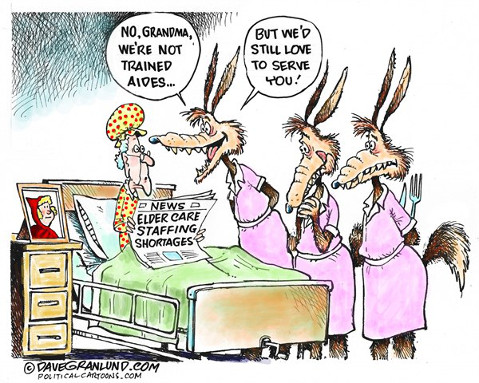Become Aware of Elder Abuse
Understanding the Dynamics that Can Lead to Crimes

There’s elder abuse all around you, experts warn.
“Elder abuse is an insidious problem,” Santa Barbara County Sheriff-Coroner Bill Brown pointed out during his keynote for the Annual One-Day Training Conference for professionals in the care and management of the needs of older citizens. The event was held at the Carrillo Community Center in Santa Barbara on June 15, which was World Elder Abuse Awareness Day (WEAAD).
In 2006, the United Nations designated WEAAD as an opportunity for communities around the world to promote a better understanding of elder abuse through awareness of the processes involved in the problem: cultural, social, economic, and demographic.
In his remarks, Sheriff Brown said: “Elder abuse takes many different forms: physical violence, verbal abuse, neglect, fiduciary crimes and sexual assault.
“Senior citizens are some of the most vulnerable people in our community, so it’s up to all of us to protect them. We need to make sure no one hurts or takes advantage of them, and we need to hold those that do accountable.”
Experts refer to the rapidly increasing demographic of ages 65 and above as the “silver tsunami” in the U.S. that adds some 10,000 people every day for the next 20 years. At present, there are about 50 million people in this age group; by year 2020, the number is projected to rise to 80 million, more than 20 percent.
California has the largest adult population in the nation; in Santa Barbara County, almost 20 percent are now age 60 or older.
At the start of the conference, Jeanne West, a Santa Barbara nurse expert in geriatric management, gave an overview of the elder abuse crisis in the nation: Each year, 5 million older Americans are victims of elder abuse, neglect, and exploitation. In California, this translates to an older or dependent adult abuse every three minutes. And sadly, elder abuse happens everywhere — in homes, nursing facilities, assisted living, even in hospitals.
“That’s staggering!” West exclaimed.
Sheriff Brown agreed. He noted that elder abuse has grown exponentially over the decades and that abuses vary from “minor to exceedingly serious” offenses. He used a case currently being prosecuted by his office to illustrate extreme abuse.
A 54-year-old man brought his 76-year-old elderly mother into the emergency room. She was “non-responsive, covered in feces, neglected, with body trauma not consistent with a reported fall — with a low probability of survival.” Upon investigation, the Sheriff’s Office found evidence of elder abuse consistent with the profile of perpetrators: adult children, male with past history of substance abuse, with mental major stress and financial problems, and trouble with police. In this case, the son used his mother’s house as collateral for his bail. Brown further noted that elder abuse victims have a 300 percent chance of dying. The mother died in this case.
Brown said government expenses on elder abuse litigations was $2.6 billion and for healthcare $5.3 billion. He reminded everyone about the obligation to protect, care for, and nurture our elderly by being vigilant and caring, and making the effort to help stop the problem. He noted of the elderly: “These were the men who invaded the beaches of Normandy; the women who kept the home fire burning and those that endured the Great Depression. They were our teachers and leaders.”
The public should immediately report any suspected elder abuse to local law enforcement or contact the Adult Services Division of the Department of Social Services at (805) 681-4401.
Sheriff Brown’s assessment of the profile of elder abuser was corroborated by the next speaker, Dr. Lisa Gibbs. A published author and speaker at numerous conferences, Dr. Gibbs is clinical professor-medical director of Senior Health Center, and chief, Division of Geriatric Medicine and Gerontology-director of Center of Excellence on Elder Abuse & Neglect at the University of Irvine. In 2012, she founded Geri-West, a consortium of geriatric medicine program on the West Coast, which handles the most difficult cases in elder abuse.
From studies conducted, she identified the common abuser: a family member (80 percent of the time); a caregiver with substance abuse problem, mental illness, history of unemployment and abuse by victim, dependent on victim for finances or housing; increased caregiving stress; and transgenerational violence. Though Dr. Gibbs quoted King Lear’s “How sharper than a serpent’s tooth it is to have a thankless child!” she also said that ungrateful child is among the common abusers.
Among the many other problems associated with elder abuse, Dr. Gibbs pointed to the mental illness and dementia that are prevalent in older adults and affect the caregiver/recipient relationship. These illness can result in or increase the risk of elder mistreatment.
She noted that for every one report of abuse, five go unreported: “For every one case of case of elder abuse known, 23 remain unknown; and for every one case of financial abuse known, 44 remain unknown.”
“APS (Adult Protective Services) oversees more than a thousand cases every month,” Dr. Gibbs stated.



